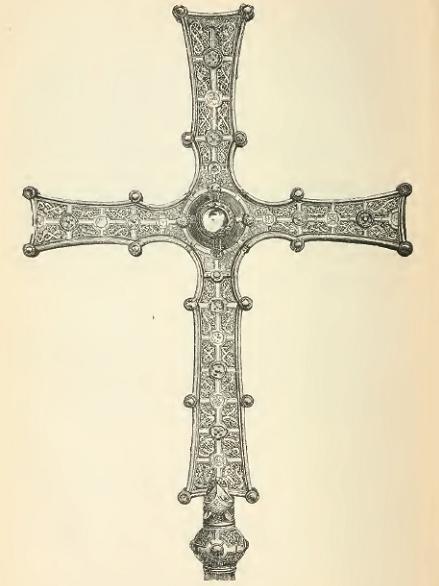Facts About Cross of Cong
The Cross of Cong is a breathtaking example of early 12th-century Irish Christian art, commissioned by Tairrdelbach Ua Conchobair, the King of Connacht and High King of Ireland. This processional cross also serves as a reliquary, designed to be mounted on a staff and to house a fragment of the True Cross. It is currently on display at the National Museum of Ireland in Dublin, where it stands as a preeminent example of medieval metalwork and decorative art in Western Europe.
Embellished with gold, silver, niello, copper, bronze, enamel, and colored glass, the Cross of Cong is a visual feast. It combines traditional Irish Insular art with Viking influences and Romanesque elements. At its center, a large polished rock crystal once held the relic of the True Cross. The cross measures 30 inches in height and 18 3/4 inches across. It was not only a sacred object but also a key feature in religious processions and ceremonies, often carried and placed on the altar.
The journey of the Cross of Cong is as intriguing as its design. Originally created in County Roscommon, it was subsequently moved to Tuam and then to Cong Abbey. During periods of religious persecution in Ireland, it was hidden to protect it. In the 19th century, George Petrie acquired the cross, which eventually found a permanent home at the National Museum of Ireland in Dublin. The cross bears inscriptions in both Latin and Irish, including prayers for Tairrdelbach Ua Conchobair and the artisans who crafted it.
The cross was likely crafted by a prestigious metal workshop in 12th-century County Roscommon, possibly under the patronage of Bishop Domnall mac Flannacain Ui Dubthaig and created by master goldsmith Mael Isu Bratain Ui Echach. This workshop may have connections to St. Assicus of Elphin, with patronage from Ruaidrí Ua Conchobair. This masterpiece remains a cherished artifact of Irish cultural heritage, reflecting the rich history and artistic brilliance of medieval Ireland.

 United Kingdom
United Kingdom